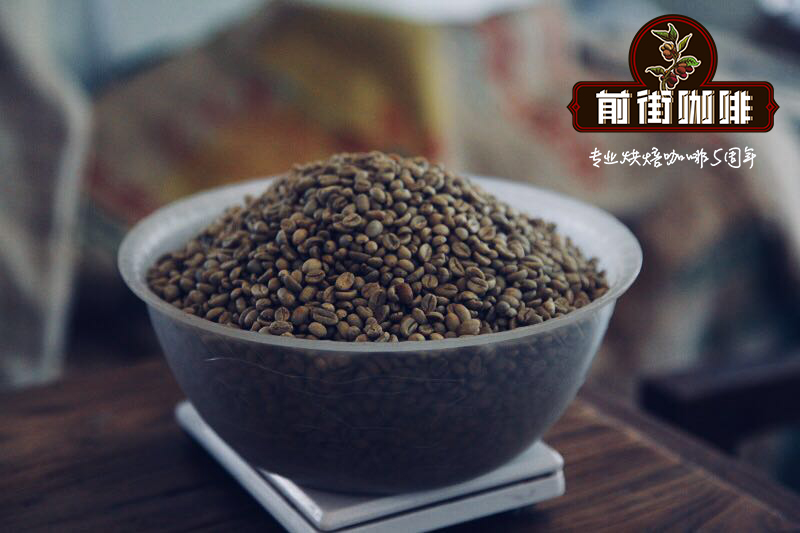Do you grow coffee beans in India? India's wind-stained Malabar coffee characteristics, environment and climate

Professional coffee knowledge exchange more coffee bean information please follow the coffee workshop (Wechat official account cafe_style)
The main coffee growing areas in India
India's coffee industry is currently dominated by southern India. Karnataka, Kerala and Tamil Nadu together account for more than 90% of the country's coffee production; at present, about 250000 people in India grow coffee beans, and almost all of the country's coffee production
Indian climate
The ideal climatic conditions for the growth of coffee beans are 23 to 28 degrees Celsius, 1.5 to 2.0 meters of rainfall, and a dry season of 2-3 months after the rainy season. The cold temperature near freezing point is not suitable for growing coffee. Although the rainfall in southern India is less than 1 meter, there are irrigation facilities, temperature and relative humidity are also conducive to the growth of coffee beans.
Fungal erosion
In India, coffee plants are often affected by fungi. The fungus that most often affects the growth of coffee beans is Hemileia vastatrix, which has no cure. Coffee plants are also affected by a disease called coffee rot, which can cause serious damage to coffee plants during the rainy season.
Indian wind-stained Malabar coffee is one of the most famous boutique coffee beans in the world. Wind-stained coffee beans, also known as "monsoon coffee beans" in Taiwan, are named after their English name "Monsoon". His treatment is quite complex and peculiar, mainly due to the complex and unique flavor produced by the interaction between the earth and the sea breeze. The term "wind-stained Malaba" refers to the unique coffee product of its weathered beans treated in Malaba on the west coast of India, where the coffee is transported to all parts of the world after tedious and rigorous wind-stained treatment.
Wind-stained coffee needs to be made with sun beans, and all factories dealing with wind-stained coffee face to the west to meet the salty and wet monsoon blowing from the southwest sea. The coffee beans are spread flat in the wind field, the windows are all open, and the wind stains to a certain extent, and then enter the bag, but because the beans will expand a lot in the process, the coffee beans can not be filled too full, and the coffee bags should not be piled too dense to avoid mildew and spoilage due to lack of wind. It is also necessary to pour out coffee beans and replace sacks from time to time to avoid mold, which is a very time-consuming and labor-consuming project. The weathering period is about 12 to 16 weeks, and after it is ripe, it will be fumigated to drive out the weevil, and finally the beans will be screened manually to remove the failed beans that have not turned golden. After three to four months of wind treatment, green coffee beans are twice as large in volume and reduced in weight and density.
Although the wind-stained Malabar coffee beans seem to be big and fat, they are soft beans that are strong and dry outside, a change that has taken place after months of weathering. Coffee beans have been exposed to the moist monsoon for several weeks, which not only turns the beans yellow, but also reduces the acidity of the coffee itself, and the taste is very special. In addition to serving as a single product, Indian Malabar coffee beans are also suitable for blending integrated coffee beans.
.
END
For more professional coffee exchanges, please scan the code and follow Wechat: qiannjie

Please indicate the source of the reprint.
Important Notice :
前街咖啡 FrontStreet Coffee has moved to new addredd:
FrontStreet Coffee Address: 315,Donghua East Road,GuangZhou
Tel:020 38364473
- Prev

The origin characteristics of Canefra coffee beans and the relationship between Canefra and Robusta coffee beans
Professional coffee knowledge exchange more coffee bean information please follow the coffee workshop (Wechat official account cafe_style) Kanefra coffee beans, the relationship between Canefera and Robsta coffee beans, Carnefra has several first introduced coffee beans of the two major families, the ── Arabica family and the Canephora family. Canefra is commonly known as Rob.
- Next

Mexican specialty coffee coffee é deolla, coffee with cinnamon aroma
Professional coffee knowledge exchange more coffee bean information please follow the coffee workshop (Wechat official account cafe_style) Cafdeolla (lighter pot of coffee) is a traditional Mexican coffee drink. In order to prepare the coffee shop, traditional homemade clay pots must be used because it brings a special flavor to the coffee. This type of coffee is mainly consumed in cold climates and rural areas.
Related
- How did the Salvadoran coffee industry develop in Central America?
- What exactly does the golden cup extraction of coffee mean?
- The Origin of Coffee flower
- [2023 Starbucks World Earth Day] there are more meaningful things besides free Starbucks coffee!
- What kind of coffee is there in Spain? 9 Flavors of Spanish Coffee
- Aromatic African coffee| Kenya's coffee culture and historical production area
- Liberica Coffee Bean knowledge: the characteristics of Liberian Coffee beans of the three original species of Coffee beans
- The origin and formula of Spanish latte introduces the taste characteristics of Bombon coffee in Valencia, Spain.
- How to adjust the solution of over-extracted coffee
- What is the tasting period of coffee beans? What is the period of coffee and beans? How should coffee wake up and raise beans?

